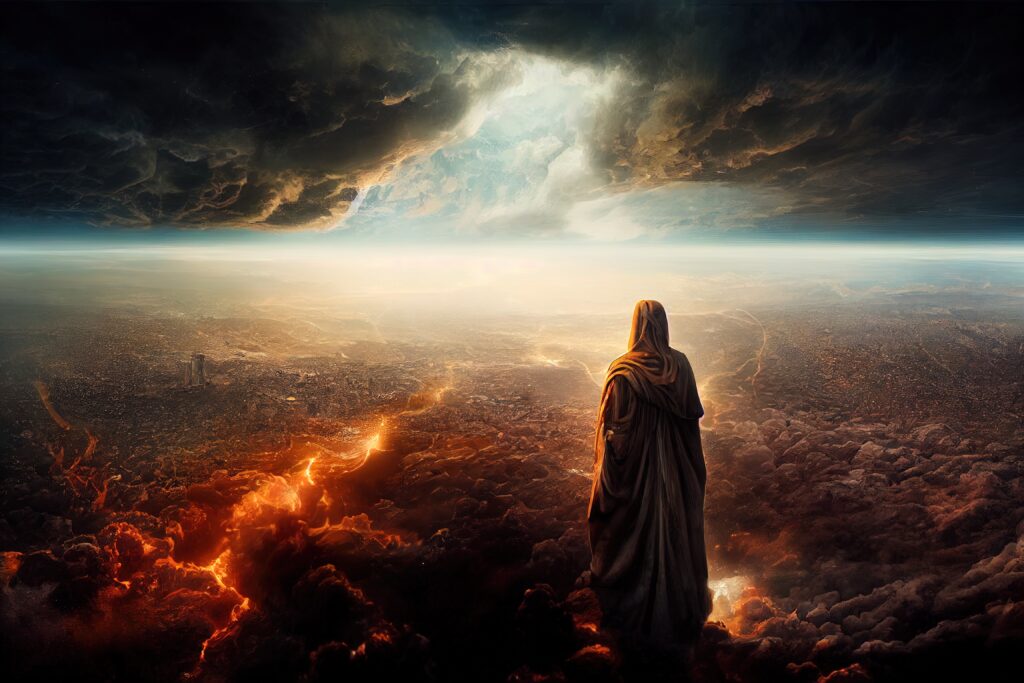
Parallels.
“As I watched, the Lamb broke the first of the seven seals on the scroll. Then I heard one of the four living beings say with a voice like thunder, “Come!” I looked up and saw a white horse standing there. Its rider carried a bow, and a crown was placed on his head. He rode out to win many battles and gain the victory.” – Revelation 6:1-2. NLT.
The Book of Revelation is carefully structured, although many aspects of that structure elude most twenty-first century readers. The first half of the book focuses on the general realities of the whole Christian age. One finds references to the cross, the preaching of the gospel, and the kinds of events that go on all the way from Jesus’ day to the end of the world. The second half of the book, on the other hand, focuses almost exclusively on the final events of earth’s history.
When you see parallels between the first and second halves of the book, therefore, the first part of the parallel tends to focus on the general realities of the whole age, while the second part looks back on the Christian age from the perspective of the End. For example, in the first part of the book God is praised for creation (4:11) and for redemption (5:9,10,12,13)–events already in the past at the time Revelation was written. In Revelation 19:1-6, on the other hand, the same language of praise is lavished on God’s deliverance of His people at the end of this world’s history.
In a similar fashion, white horses appear in only two places in Revelation. The white horse of Revelation 6 is parallel to the white horse of Revelation 19. Both riders wear crowns, but different Greek words are used for the respective crowns. The rider of our passage wears a stephanos crown, a crown of victory. The term is used for the “Olympic gold medal,” the token of victory received by Olympic athletes when they win a race. The rider in chapter 19, on the other hand, wears the diadem, the royal crown of rulership. In the first half of Revelation Jesus and His people are repeatedly referred to as over comers, like Olympic athletes.
The one who overcomes like Jesus will receive the crown of victory. In Revelation 19 Jesus puts an end to all opposition on the earth, He can now wear the crown of royalty.
The events of the seven seals must also be understood in the context of the Old Testament covenant curses, specified in terms of sword, famine, pestilence, and wild beasts (Lev. 26:21-26). Ezekiel calls them God’s “four severe judgments” (Ezek. 14:21 NASB). They were the disciplinary judgments by which God, seeking to awaken His people to their spiritual condition, chastised them when they became unfaithful to the covenant. In a similar way, the four horsemen are the means that God uses to keep His people awake as they await Jesus’ return.
There also are close parallels between the first four seals and Matthew 24:4-14, in which Jesus explained what would happen in the world. The four horsemen are the means by which God keeps His people on the right track by reminding them that this world, as it now exists, is not their home.
Though symbolic, Revelation 6:1-2 is also about conquest. It brings to mind Revelation 19:11-16, which symbolically portrays Christ as riding a white horse and leading His heavenly armies of angels to deliver His people at the Second Coming. As a symbol of purity, the colour white is regularly associated with Christ and His followers. The rider on the horse holds a bow and is given a crown (Rev. 6:2), which evokes the symbolic imagery of God in the Old Testament, riding a horse with a bow in His hand while conquering His people’s enemies (Hab. 3:8-13; Ps. 45:4-5). The Greek word for the crown in today’s text (Rev. 6:2) worn by the rider is stephanos, which is the crown of victory (Rev. 2:10, Rev. 3:11). This rider is a conqueror going forward conquering and to conquer.
Prophetically, the scene of the first seal corresponds to the message to the church in Ephesus; it describes the apostolic period of the first century during which the gospel spread rapidly throughout the world (Col. 1:23). The ultimate conquest is realized with Christ’s coming in glory.

Thanks for explaining about the different kinds of crowns Ross..you must have such a rich experience as you read Revelation! Thanks for sharing it with us Rosie
I am glad you appreciate the studies Rosie – I do put a lot of time into them.